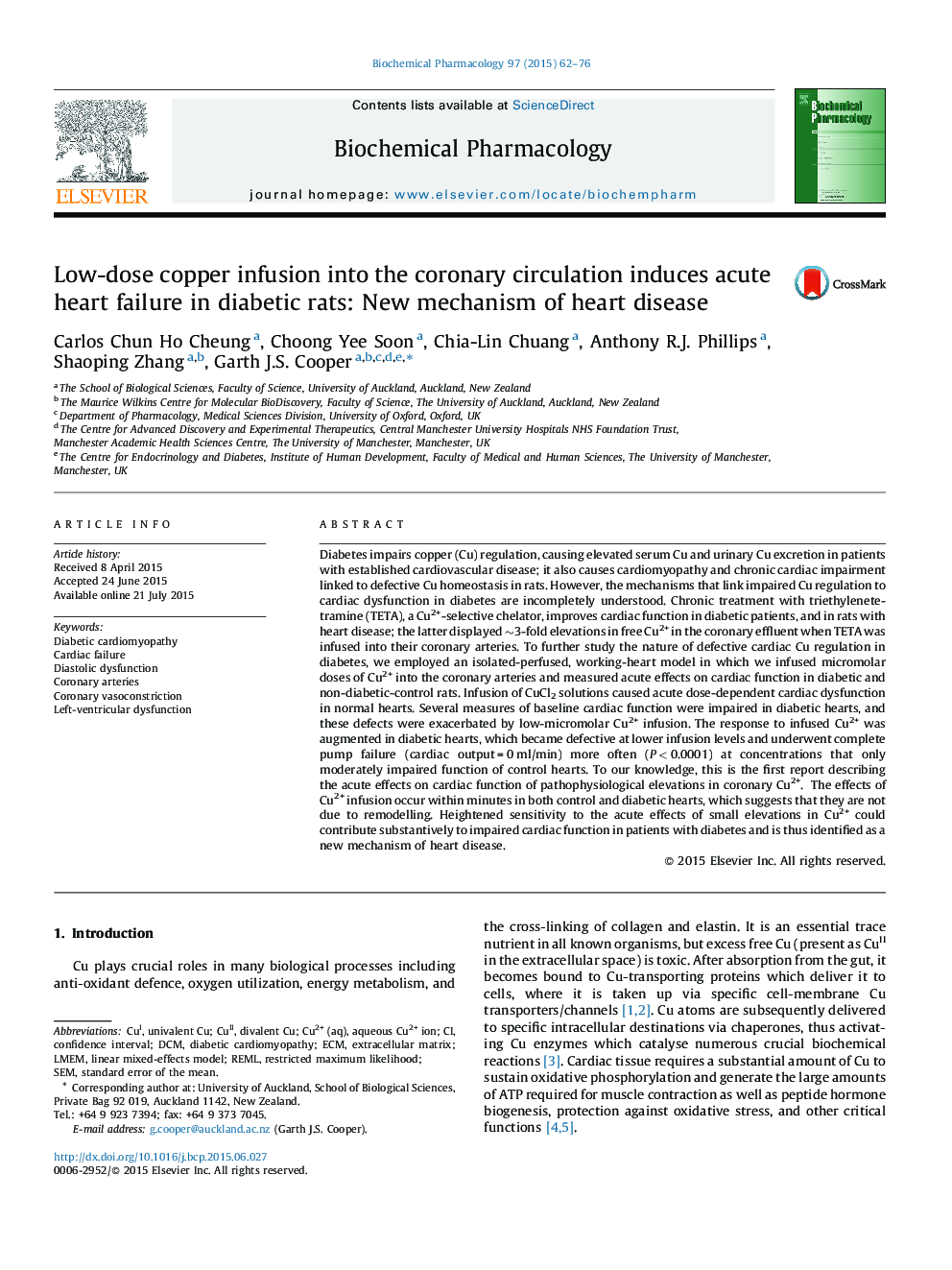| Article ID | Journal | Published Year | Pages | File Type |
|---|---|---|---|---|
| 2511903 | Biochemical Pharmacology | 2015 | 15 Pages |
Diabetes impairs copper (Cu) regulation, causing elevated serum Cu and urinary Cu excretion in patients with established cardiovascular disease; it also causes cardiomyopathy and chronic cardiac impairment linked to defective Cu homeostasis in rats. However, the mechanisms that link impaired Cu regulation to cardiac dysfunction in diabetes are incompletely understood. Chronic treatment with triethylenetetramine (TETA), a Cu2+-selective chelator, improves cardiac function in diabetic patients, and in rats with heart disease; the latter displayed ∼3-fold elevations in free Cu2+ in the coronary effluent when TETA was infused into their coronary arteries. To further study the nature of defective cardiac Cu regulation in diabetes, we employed an isolated-perfused, working-heart model in which we infused micromolar doses of Cu2+ into the coronary arteries and measured acute effects on cardiac function in diabetic and non-diabetic-control rats. Infusion of CuCl2 solutions caused acute dose-dependent cardiac dysfunction in normal hearts. Several measures of baseline cardiac function were impaired in diabetic hearts, and these defects were exacerbated by low-micromolar Cu2+ infusion. The response to infused Cu2+ was augmented in diabetic hearts, which became defective at lower infusion levels and underwent complete pump failure (cardiac output = 0 ml/min) more often (P < 0.0001) at concentrations that only moderately impaired function of control hearts. To our knowledge, this is the first report describing the acute effects on cardiac function of pathophysiological elevations in coronary Cu2+. The effects of Cu2+ infusion occur within minutes in both control and diabetic hearts, which suggests that they are not due to remodelling. Heightened sensitivity to the acute effects of small elevations in Cu2+ could contribute substantively to impaired cardiac function in patients with diabetes and is thus identified as a new mechanism of heart disease.
Graphical abstractFigure optionsDownload full-size imageDownload as PowerPoint slide
